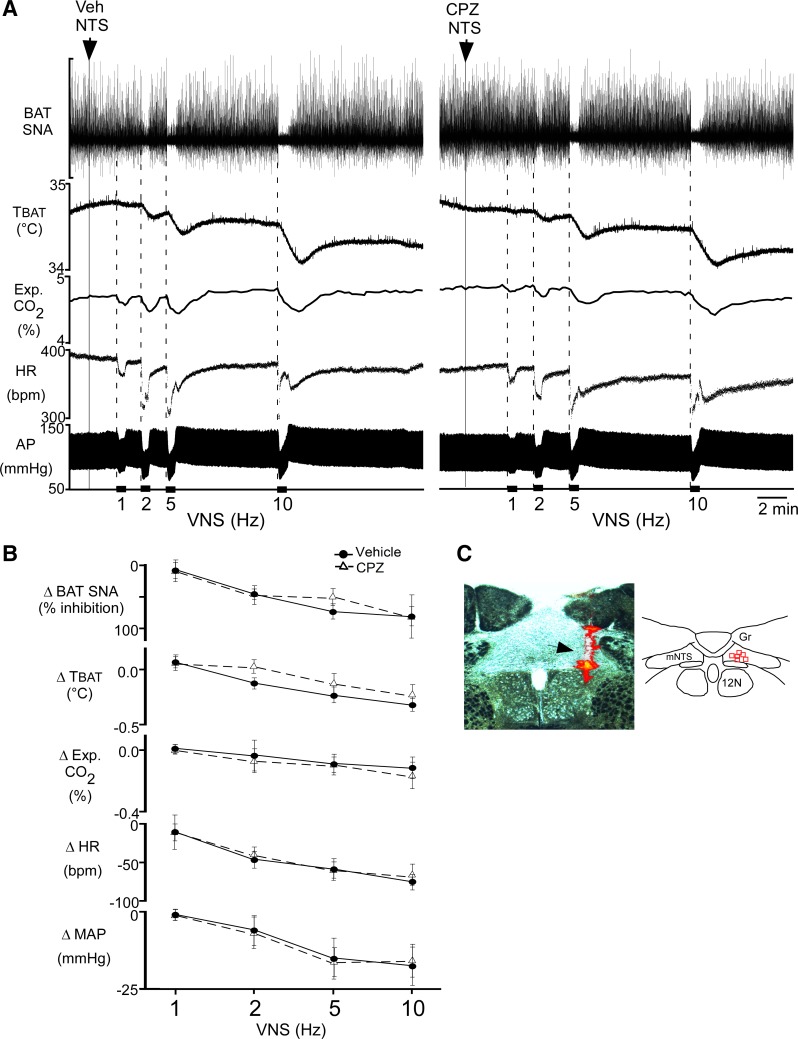Fig. 4.
Nanoinjection of capsazepine (CPZ) in the medial nucleus tractus solitarius (mNTS) does not attenuate the effects of electrical vagal nerve stimulation (VNS). A: representative example illustrating the decreases in brown adipose tissue (BAT) sympathetic nerve activity (SNA), BAT temperature (TBAT), expired CO2, heart rate (HR), and arterial pressure (AP) evoked by unilateral VNS (30-s stimulation periods are indicated by black bars along the time axis) after nanoinjection of vehicle (left, arrowhead and dotted line) or CPZ (right, arrowhead and dotted line) into the mNTS ipsilateral to the VNS. B: group data (means ± SE; n = 6 in each group) of VNS-evoked responses following vehicle pretreatment (filled circles, solid line) or CPZ pretreatment (open triangles, dashed line) into mNTS. There were no significant differences between vehicle and CPZ trials at any frequency (P > 0.05, paired t-test at each frequency). MAP, mean arterial pressure. C, left: photomicrograph of a representative CPZ nanoinjection site in mNTS (arrowhead indicates red bead deposit). C, right: locations of CPZ nanoinjection sites (red squares) plotted on a schematic drawing of a coronal section at 13.5–14 mm caudal to bregma.

